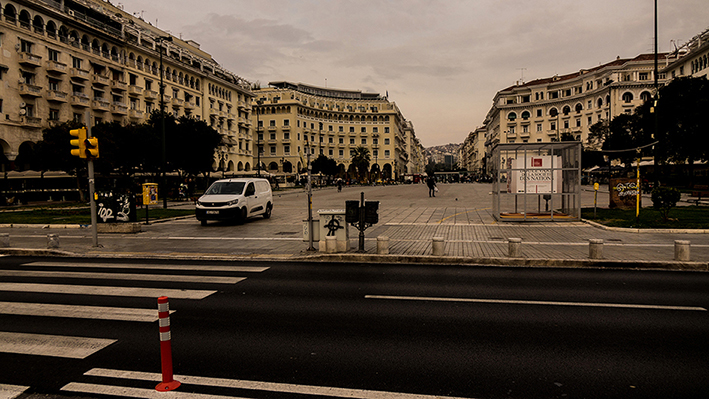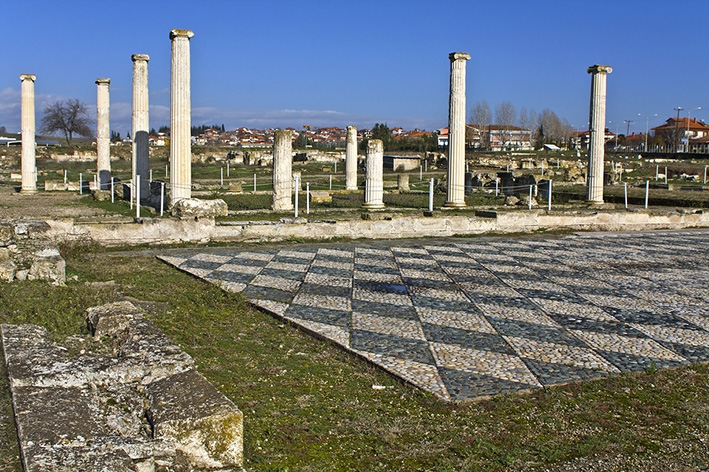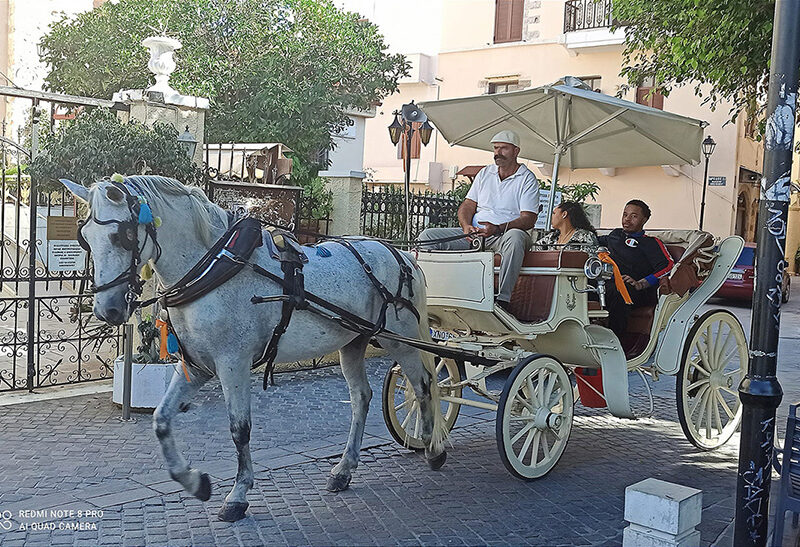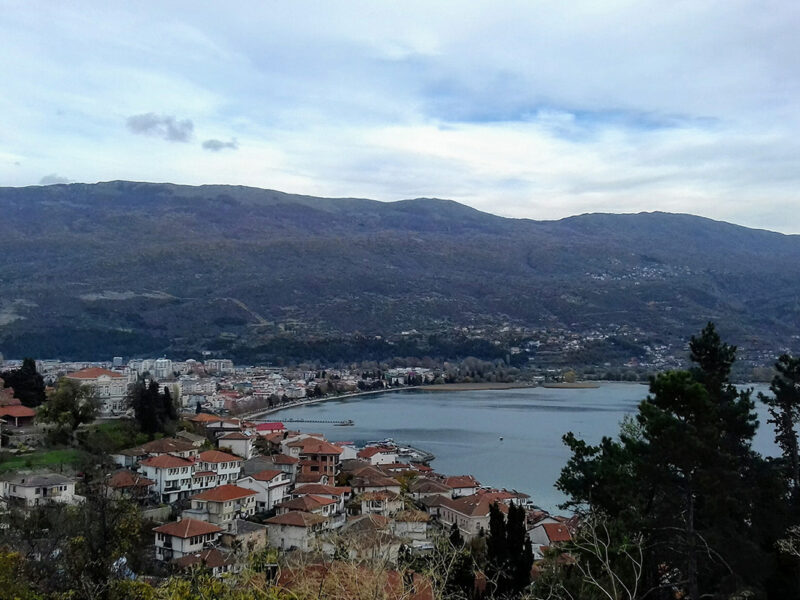A ROAD-SQUARE
Aristotelous square: writes Giannis Fragoulis
Aristotelous Street starts from the church of Agios Dimitrios to reach the sea. Part of this urban axis was a square. Today we are accustomed to call Aristotle Square all this area up to the port.
ARISTOTELOUS SQUARE: THE NEW PLAN OF THE CITY
Part of the New Plan of the city of Thessaloniki was the design of Aristotelous Street. Speaking of this design we mention the residential plan. This includes the houses located on either side of Aristotelous street.
The reason for the design of the New Plan was the fire of August 18, 1917, with the new calendar. It destroyed a large part of the city. The current center of Thessaloniki was largely destroyed. A total of 9,500 buildings were destroyed and 73,000 residents were left homeless. Among them were shops, hotels, banks. Also administrative services, important spiritual and religious institutions. Finally, newspaper offices, historical and archeological monuments. These were samples of the popular Macedonian architecture and the modern currents of romantic rhythm and art nouveau.
This plan was undertaken by the Eleftherios Venizelos government with the Minister of Transport, Alexandros Papanastasiou. The pace of work was remarkably fast, given that Greece was still in a state of war.
ARISTOTELOUS SQUARE: THE POLICY OF THE NEW DESIGN
Apart from Papanastasiou’s personal interest, we also had the scientific one. Those who undertook to design the new map were the members of the special urban planning team. The one who stood out was Ernest Emprar, a member of the archeological service of the French Army of the East.
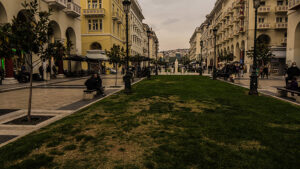
This plan proposed by Ebrar and the task force was never implemented exactly as planned. Part of the plan was Aristotelous Street. We see the residential area of this street following more closely the design of the committee. Something that did not happen in other parts of the city center.
Where the implementation of this plan found obstacles was the narrow financial obstacles and the backstage actions. We can see this clearly on Aristotelous Street. Today’s huge square does not have this single architectural character that we would expect. Period buildings give an atmosphere. But this is interrupted by more modern buildings that break the image of that time. But these shortcomings are not capable of altering so much of the architectural style that Embrar wanted to give.
ARISTOTELOUS SQUARE: FROM THE MOUNTAIN TO THE PORT
One starts from mountainous Thessaloniki. Above the Ano Poli. From the castles. He is ready to take the ship and leave. He is looking for better luck in another city. He has got the essentials. He leaves the rest here together with the memories. He comes down with a backpack on his shoulder. It reaches Olympiados Street. It takes a road and descends to Kassandrou Street. On the right is the aqueduct. Below, on the left, the church of Agios Dimitrios. The patron saint of the city.
One by one he meets the historical monuments. As if they are obstacles to not letting it go. Memories, History, passions, loves, meetings, his life. He will leave everything behind. He can do it;
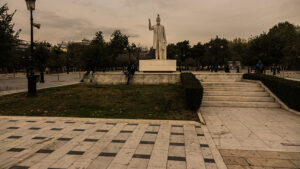
ARISTOTELOUS SQUARE: A STORY PUZZLE
Each of these monuments has its own history. Every story is a part of the historical route of this city. The old elementary school and, behind, the aqueduct. It leaves Aigli on the left. He sees the church of Agios Dimitrios. He will find the Roman Agora. Below the playground associated with Magemenes, on the left the church of Agios Nikolaos of Tranos. Adjacent to this is the house where the poet Manolis Anagnostakis was born.
Then the statue of Eleftherios Venizelos. It is between the church of Panagia Chalkeon and the old hamam or Bey Hamam. His steps lead him to the bottom of Aristotle. Neoclassical buildings, right and left. They have become homes, offices or public services. Among them the Telloglou house, the Olympion cinema and the Electra Palace hotel.
Is tired. Not from walking but from feeling. Every corner and History, the one we will discover together. He is sitting on a bench next to the statue of Aristotle. In the area where Aristotelous Square was. Will go; He’s thinking about it. The magnet of the city does not leave him. He thinks about it again.

